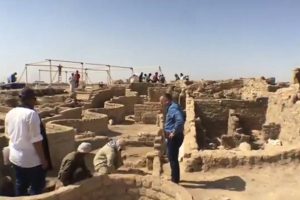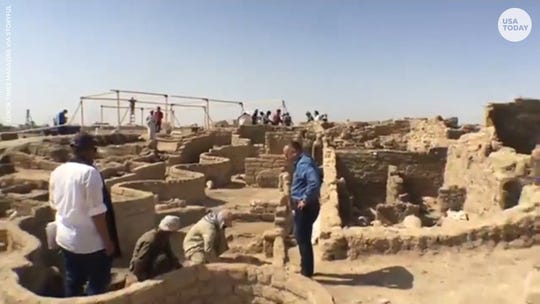‘Lost golden city’: 3,000-year-old settlement unearthed in Egypt

Archaeologists have discovered a “lost golden city” in Egypt that dates back to the 14th century B.C.
In a Facebook post on Thursday, Egyptian archaeologist Zahi Hawass announced the finding of the 3,000-year-old city near Luxor that was around during the reigns of Amenhotep III, Ay and Tutankhamun, also known as King Tut.
“Many foreign missions searched for this city and never found it. We began our work searching for the mortuary temple of Tutankhamun because the temples of both Horemheb and Ay were found in this area,” Hawass said.
The mission was able to date the settlement by historical references that consisted of three royal palaces of King Amenhotep III, according to Hawass.
“The discovery of this lost city is the second most important archeological discovery since the tomb of Tutankhamun,” Betsy Brian, professor of Egyptology at Johns Hopkins University, said in the same statement posted to Facebook.
Parade for royal mummies: Egypt parades royal mummies in show of Pharaonic heritage
Pharaoh’s passport after death is true: Fact check: Story about Pharaoh’s passport after death is true, but image of it is fake
The excavation of the city began in September 2020, and over time archeologists unearthed “a large city in a good condition of preservation, with almost complete walls, and with rooms filled with tools of daily life.”
The mission discovered a large number of artifacts including rings, scarabs, colored pottery vessels and mud bricks bearing the royal seal of King Amenhotep III.
It was buried in the sand for three millennium. It is the "largest city ever discovered in Egypt." (Photo: Luxor Times Magazine via Storyful)
Archaeologists also found two unusual burials of a cow that are under investigation “to determine the nature and purpose of this practice.”
A burial of a person found with arms outstretched to his side and the remains of a rope wrapped around his knees is also under investigation due to the location and odd positioning of the skeleton.
In the southern area of the city, the mission found a bakery “complete with ovens and storage pottery.
“From its size, we can state the kitchen was catering a very large number of workers and employees,” Hawass said.
An administrative and residential district fenced in by a zigzag wall with only one entrance point was found in another area. According to Hawass, the single entrance may have been used as a form of security.
While the mission has uncovered many findings, Hawass said further excavations were needed to determine what happened to cause people to leave the city.
“Work is underway and the mission expects to uncover untouched tombs filled with treasures,” Hawass said.
Source: Read Full Article

